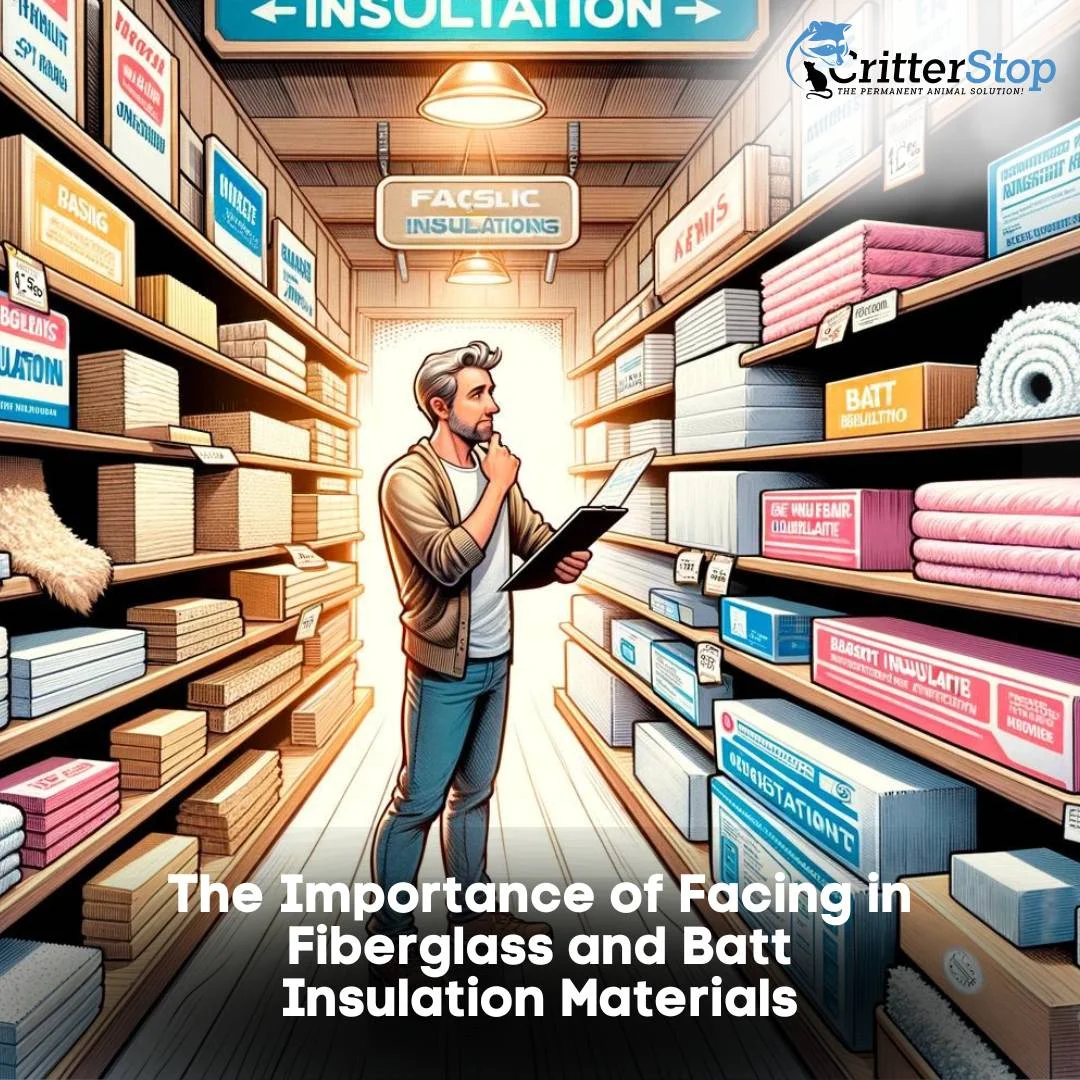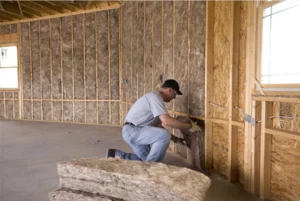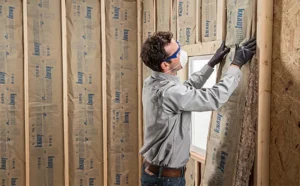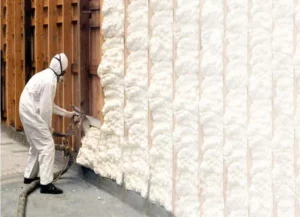
Insulation plays a crucial role in maintaining a comfortable and energy-efficient home. One factor that greatly impacts the performance of insulation materials is facing. Facing refers to the layer of material applied to one side of fiberglass and batt insulation. It serves multiple purposes, including enhancing thermal performance, moisture resistance, and fire safety. In this article, we will explore the impact of facing on insulation and delve into the reasons why faced insulation is a preferred choice in various areas of the home.
Facing materials, such as kraft paper, foil, or polypropylene, provide insulation with added capabilities, making them more effective in reducing heat transfer and maximizing energy efficiency. By incorporating facing into insulation products, manufacturers can enhance their performance and ensure they meet the specific needs of different areas within a home.
When it comes to insulation, every detail matters. Facing materials play a crucial role in improving the overall performance and longevity of insulation. Let's dive deeper into how facing enhances the performance of insulation materials.

One of the main benefits of facing is its ability to act as a vapor barrier. This feature prevents moisture from penetrating the insulation, protecting it from damage and maintaining its performance over time. Moisture can compromise insulation effectiveness, lead to mold growth, and even cause structural issues in the long run. Facing helps to mitigate these risks, ensuring insulation remains efficient and durable.
In addition to moisture control, facing materials also contribute to the fire safety of insulation. Many facing materials have fire-resistant properties, which can act as a barrier, preventing the spread of flames in the event of a fire. This added layer of protection provides valuable time for occupants to safely evacuate and for emergency responders to control the situation.
While facing offers numerous advantages, it's important to understand the differences between faced and unfaced insulation. Unfaced insulation is often used in areas where moisture control is not a concern, such as interior walls or ceilings. It offers excellent thermal performance but lacks the moisture management capabilities that facing provides.
On the other hand, faced insulation is specifically designed for areas where moisture control is essential, such as attics, crawl spaces, and exterior walls. The facing material acts as a safeguard, preventing moisture from entering the insulation and compromising its effectiveness. Additionally, faced insulation offers improved fire resistance, making it an ideal choice for areas where fire safety is a priority.
Choosing the right type of insulation for each area of a home is crucial to ensure optimal performance and energy efficiency. By understanding the benefits of facing materials and the differences between faced and unfaced insulation, homeowners can make informed decisions when it comes to insulating their homes.
It's worth noting that facing materials are not limited to kraft paper, foil, or polypropylene. Technological advancements have led to the development of innovative facing materials that offer even greater performance and durability. From reflective facings that enhance thermal efficiency to vapor-permeable facings that allow moisture to escape, the options are vast and ever-evolving.

Furthermore, the installation process of faced insulation requires attention to detail. Proper installation techniques, such as ensuring a tight seal around edges and seams, are essential to maximize the benefits of facing materials. This meticulous approach guarantees that the insulation performs at its best, providing homeowners with the desired comfort and energy savings.
In conclusion, facing materials are a valuable addition to fiberglass and batt insulation. They enhance the insulation's performance by acting as a vapor barrier, preventing moisture damage, and improving fire safety. Understanding the differences between faced and unfaced insulation allows homeowners to make informed decisions based on their specific needs. With the continuous advancements in facing materials, the future of insulation looks promising, offering even greater efficiency and sustainability.
Now that we understand the importance of facing, let's explore how it can be optimized for different areas of your home to maximize energy efficiency and comfort.
The attic is one of the primary areas of the home that benefits from faced insulation. The facing material not only provides moisture protection but also helps to reflect radiant heat, preventing it from transferring into the living spaces below. This reflective property helps to keep the attic cooler during hot summer months, reducing the strain on air conditioning systems and lowering energy costs.
Furthermore, when faced insulation is installed in the attic, it creates a barrier that prevents warm air from escaping through the roof. This means that during the winter months, the insulation helps to retain heat within the living spaces, keeping the home cozy and reducing heating expenses.
Another advantage of using faced insulation in attics is that it acts as a sound barrier. It helps to minimize noise transmission from the outside, creating a quieter and more peaceful indoor environment.
Crawl spaces are susceptible to moisture and humidity, making them prone to mold and mildew growth. Faced insulation acts as a vapor barrier, preventing this moisture from seeping into the insulation and causing damage. By using faced insulation in crawl spaces, homeowners can maintain a healthier indoor environment and protect the structural integrity of their home.
In addition to moisture control, faced insulation in crawl spaces also helps to improve energy efficiency. By reducing air leakage, it prevents conditioned air from escaping and unconditioned air from entering the home. This not only saves energy but also enhances the overall comfort of the living spaces.
Moreover, faced insulation in crawl spaces can contribute to better indoor air quality. It helps to minimize the infiltration of outdoor pollutants, such as dust, pollen, and allergens, thereby creating a cleaner and healthier living environment for the occupants.
Exterior walls are exposed to the elements, including harsh weather conditions. The facing material in insulation helps to reinforce the thermal performance of the walls by reducing air infiltration and preventing heat loss. This results in improved energy efficiency and increased comfort for the occupants.
When faced insulation is installed in exterior walls, it acts as a barrier against drafts and air leaks. This not only helps to maintain a consistent indoor temperature but also reduces the workload on heating and cooling systems, leading to energy savings.
In addition to thermal benefits, faced insulation in exterior walls also provides acoustic insulation. It helps to dampen sound transmission from the outside, creating a quieter and more peaceful living environment. This is particularly beneficial for homes located in noisy neighborhoods or near busy streets.
Furthermore, faced insulation in exterior walls can contribute to better moisture control. It helps to prevent water vapor from entering the walls, reducing the risk of condensation, mold, and rot. This moisture resistance property helps to protect the structural integrity of the home and prolong its lifespan.
To further understand the benefits and importance of facing in insulation, it is valuable to seek advice from local experts in the field. These professionals possess the knowledge and experience necessary to guide homeowners in making informed decisions.
When it comes to insulation, there are various factors that need to be considered in order to choose the right type for your home. Climate, budget, and specific home requirements all play a crucial role in this decision-making process. Local experts can assess these factors and recommend insulation products with the appropriate facing materials to ensure optimum performance and energy efficiency.
Local experts understand that insulation is not a one-size-fits-all solution. Each home has its unique characteristics and requirements. For example, in colder climates, insulation with a higher R-value may be recommended to provide better thermal resistance. On the other hand, in warmer climates, insulation with a lower R-value but higher reflectivity may be more suitable to reduce heat gain.
Furthermore, local experts can take into account the budget constraints of homeowners. They can provide cost-effective insulation options that still meet the necessary performance standards. By considering both the short-term and long-term benefits, these experts can help homeowners make informed decisions that align with their financial goals.

Even the highest-quality insulation can underperform if not installed correctly. Local experts not only provide guidance on insulation selection but also offer professional installation services. They understand the importance of proper installation techniques to ensure the insulation fits snugly, without gaps or compression.
During the installation process, local experts pay attention to details such as sealing air leaks, using vapor barriers, and providing adequate ventilation. These measures are crucial in preventing moisture buildup, mold growth, and energy loss. By entrusting the installation to professionals, homeowners can have peace of mind knowing that their insulation will be installed correctly, maximizing its effectiveness and durability.
In conclusion, facing plays a vital role in enhancing the performance of fiberglass and batt insulation materials. It provides insulation with moisture resistance, fire safety, and improved thermal performance. By leveraging facing in different areas of a home, such as attics, crawl spaces, and exterior walls, homeowners can optimize energy efficiency, protect their homes from moisture damage, and create a more comfortable living environment.
Seeking advice from local experts further enriches the insulation decision-making process, ensuring the right insulation products with appropriate facing materials are chosen and installed correctly, resulting in a well-insulated and energy-efficient home. These experts consider various factors, such as climate, budget, and specific home requirements, to recommend the most suitable insulation options. Additionally, they provide professional installation services, ensuring that the insulation fits snugly without any gaps or compression, maximizing its effectiveness and durability.
By working with local experts, homeowners can gain valuable insights and make informed decisions when it comes to insulation. Whether it's choosing the right type of insulation or ensuring proper installation, these professionals are equipped with the knowledge and experience necessary to guide homeowners towards creating a more energy-efficient and comfortable living environment.